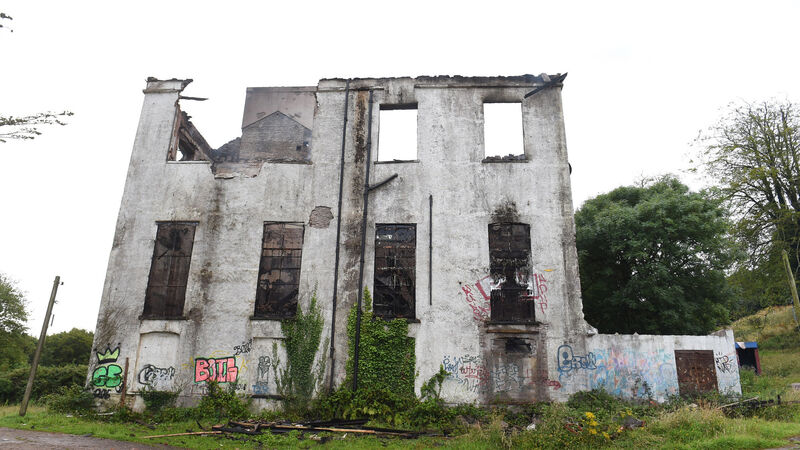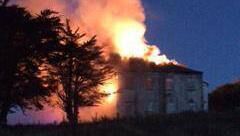Vernon Mount House at risk of collapse, warn councillors

The burnt out remains of Vernon Mount House. Picture: Larry Cummins
The derelict remains of a historic fire-damaged property in Cork City are at risk of collapse unless urgent stabilisation works are carried out, it has been claimed.
Fine Gael councillor Shane O’Callaghan, who raised concerns about the future of Vernon Mount House, welcomed a decision by city councillors to ask the Office of Public Works (OPW) to fund the works to the building.
“If dramatic action isn't taken to stabilise the structure pretty soon, it’s going to collapse. There will be nothing left to preserve,” he said.
The details emerged during a city council debate on the future of the property prompted by a motion from Mr O’Callaghan.
He tabled a motion calling for the city to fund necessary stabilisation works to the historic property “as a matter of great urgency”.
Following a lengthy debate, and clarification on the status of the property, councillors agreed to write to the OPW asking it to fund the works, which were estimated four years ago at just over €43,000.
Vernon Mount, perched on a ridge high above the city’s South Ring Rd, was built in the 1780s and is one of the few remaining Georgian mansions on the southside of Cork.
It is a listed building and contained important murals by 18th-century artist Nathaniel Grogan.
It had been in private ownership since the mid-1990s but it was allowed to fall into dereliction after a development company, headed by a US-based IT investor who graduated from Trinity College Dublin, was refused planning permission for a residential and hotel development on the site.
The owner consistently refused to engage with local efforts and with formal local authority efforts to secure the structure.
It was within the jurisdiction of Cork County Council, which in 2013 used its powers under the 2000 Planning and Development Act to step in and carry out repairs to its leaking roof at a cost of €170,000.
The site was consistently plagued by antisocial behaviour and the building was burned down in 2016.

The city council inherited responsibility for the property under the city boundary extension in 2019, and following a long and complex process, placed it on the derelict sites register last December, listing the OPW and a private company as owners.
The case was complicated by the existence of a second but similarly named company which claimed ownership of the land around the property. The legal status of the companies is unclear.
Mr O’Callaghan was told that the city’s conservation officer visited the site last February and observed that “greatly improved” new security fencing had been installed around the perimeter of the house and had provided steel structural support to the most unstable sections of the masonry walls — in particular the northern elevation.
The visit confirmed that the prevention of unauthorised access to the ruins has been greatly improved and he was told that the city council is “following up” on the site with the OPW.
Mr O’Callaghan said the structural works proposed in 2017 are urgently needed. “The ultimate goal should be for this to be saved and restored for future generations,” he said.
Green Party councillor Dan Boyle said the city must ensure the building has value into the future. “But after the fire, it appears as if some believe it should be allowed die a natural death," he said.
"But the facade remains, it has significance, and it still can be given grace into the future if we cherish it.”
Fianna Fáil councillor Mary Rose Desmond said there should be no debate about spending relatively small money to save the structure.
“We cannot in any way let it go — it’s very much part of the landscape,” she said.
Councillors agreed to support an amendment from Fine Gael’s Deirdre Forde that the OPW would be asked to fund the works.














